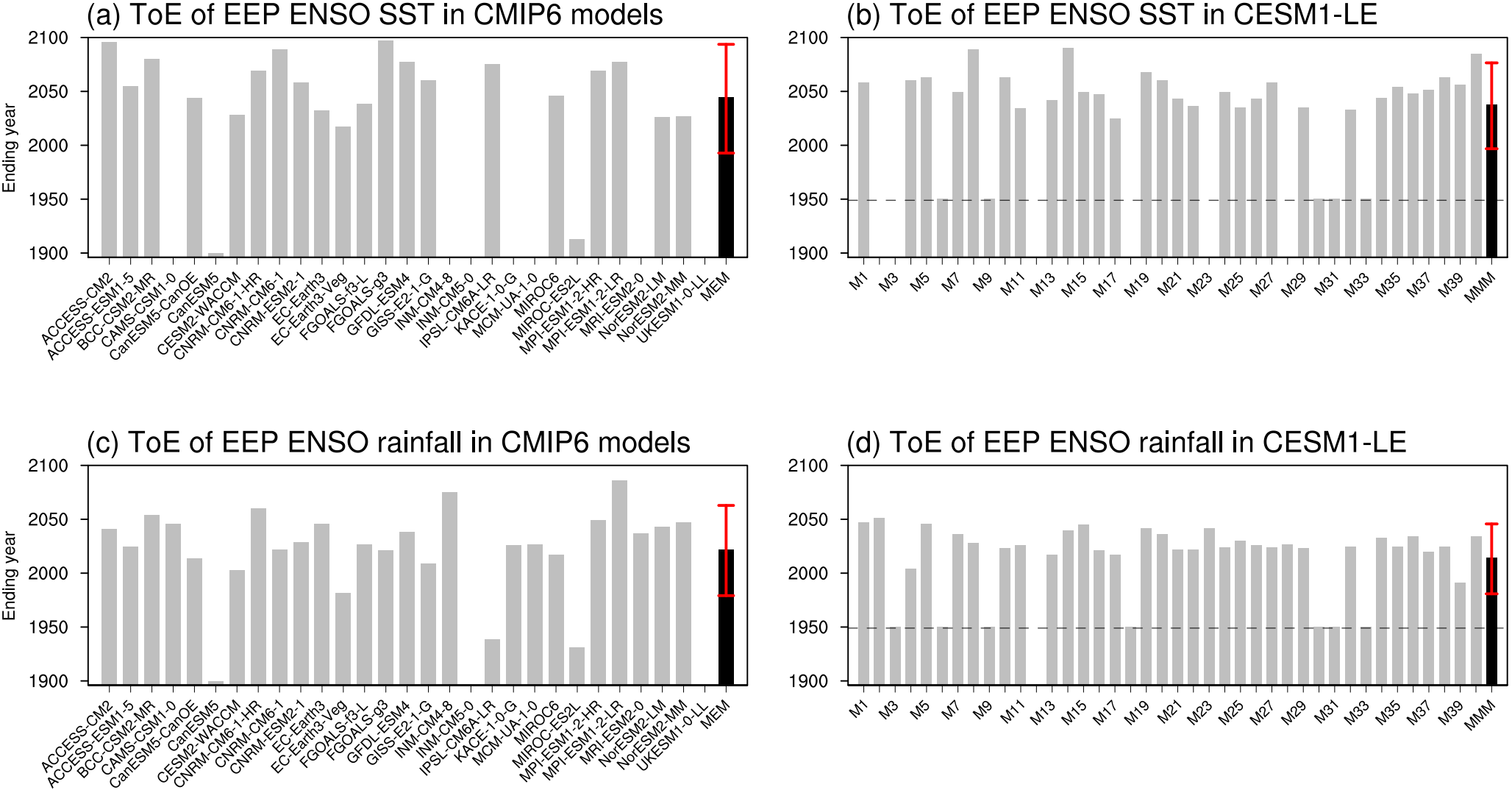Program
Recently, Zhong Shuping, a postgraduate student of the SIO, published the research paper entitled “Sources of uncertainty in the time of emergence of tropical Pacific climate change signal: role of internal variability” as the first author in the international journal Journal of Climate. The corresponding author of the article is associate researcher Ying Jun of the SIO, and the co-authors include Professor Matthew Collins of the University of Exeter, UK.
Climate change in the tropical Pacific under global warming has been the focus of atmospheric and oceanic research in recent decades, and one of the key scientific questions is when the human-induced climate change signal in the tropical Pacific exceeds its natural variability and appears. This is not only the key to answering the highly controversial scientific question of how the climate in the tropical Pacific responds to global warming caused by human activities, but also has clear practical significance for the early climate warning and the formulation of relevant policies to slow down and cope with global warming. Existing studies have used the latest coupled model (CMIP6) data to estimate the climate change signal display time (ToE) of annual mean SST and rainfall in the tropical Pacific Ocean, as well as the El Nino - Southern Oscillation (ENSO) SST and rainfall under global warming in the case of multi-model ensemble averaging. However, it should be noted that there are large differences in the estimated results of these ToEs among different models, especially for the estimation of the ToE of ENSO SST and rainfall, the differences among models can even exceed 50 years. These differences not only affect the credibility of model estimation results, but also pose significant obstacles to early climate warning. Therefore, it is urgent to reveal the sources of uncertainty in the time of emergence of tropical Pacific climate change.
In this study, three large ensemble models (CESM1-LE, CanESM2-LE, MPI-ESM-LE) under RCP8.5 emission scenario and 29 CMIP6 multi-model data under SSP585 emission scenario were used to study the role of internal variability in uncertainty of the tropical Pacific climate change signal display time. The results indicate that in the three large ensemble models, for the climate change display time of annual mean SST and rainfall, the uncertainty caused by internal variability contributes less than half to the total uncertainty, so the differences in the models dominate the uncertainty of ToE. In contrast, internal variability contributes more to the total uncertainty of annual mean rainfall than to the total uncertainty of annual mean SST (Figure 1). Contrary to the mean state, the contribution of internal variability plays a decisive role in the total uncertainty of climate change ToE of ENSO SST and rainfall (Figure 2).
The above research results mean that in the real world, if an apparent annual mean state tropical Pacific climate change signal is detected, it indicates that this climate change signal has largely affected the annual mean state of the tropical Pacific. However, if an apparent ENSO climate change signal is detected, this signal is likely caused by internal variability rather than a climate change signal caused by human activities.

Figure 1 The inter-model standard deviation (STD) of ToE of annual mean SST (a) and rainfall (c) of CMIP6 multi-model, as well as the inter-member STD of ToE of annual mean SST (b) and rainfall (d) of CESM1 large ensemble. The green box represents the equatorial east Pacific (EEP) (2.5°S–2.5°N, 180°W–90°W). The contour lines in Figures (b) and (d) represent the ratio of the inter-member STD to the inter-model STD at the ToE, expressed as a percentage (unit: %, interval: 10%).

Figure 2 ToE of EEP ENSO SST (a) and rainfall (c) in 29 CMIP6 models and EEP ENSO SST (b) and rainfall (d) in 40 CESM1 ensemble members. The missing column indicates that the model or member does not show a climate change signal until the 2070-2099 window. The red error line represents the STD between one-fold models or the STD between members. The horizontal dashed lines in Figures (b) and (d) represent the end of the first 30-year time window of the CESM1 large ensemble.
This research was supported by the National Natural Science Foundation Major Instrument Project, “Young Talents” of the Second Institute of Oceanography, MNR, the Southern Marine Science and Engineering Guangdong Laboratory (Zhuhai) Innovation Team Building Research Fund and other programs.
Paper Citation:
Zhong, S., J. Ying*, and M. Collins, 2023: Sources of uncertainty in the time of emergence of tropical Pacific climate change signal: role of internal variability. Journal of Climate, 36, 2535-2549.
-
Prev: Long sequential variation construction of the depth of hypoxia in the California Current System by satellite estimation
Next: Temporal variation characteristics of the bottom current at the equatorial gap of the Ninety East Ridge in the Indian Ocean, and its relationship with the upper ocean dynamic process



